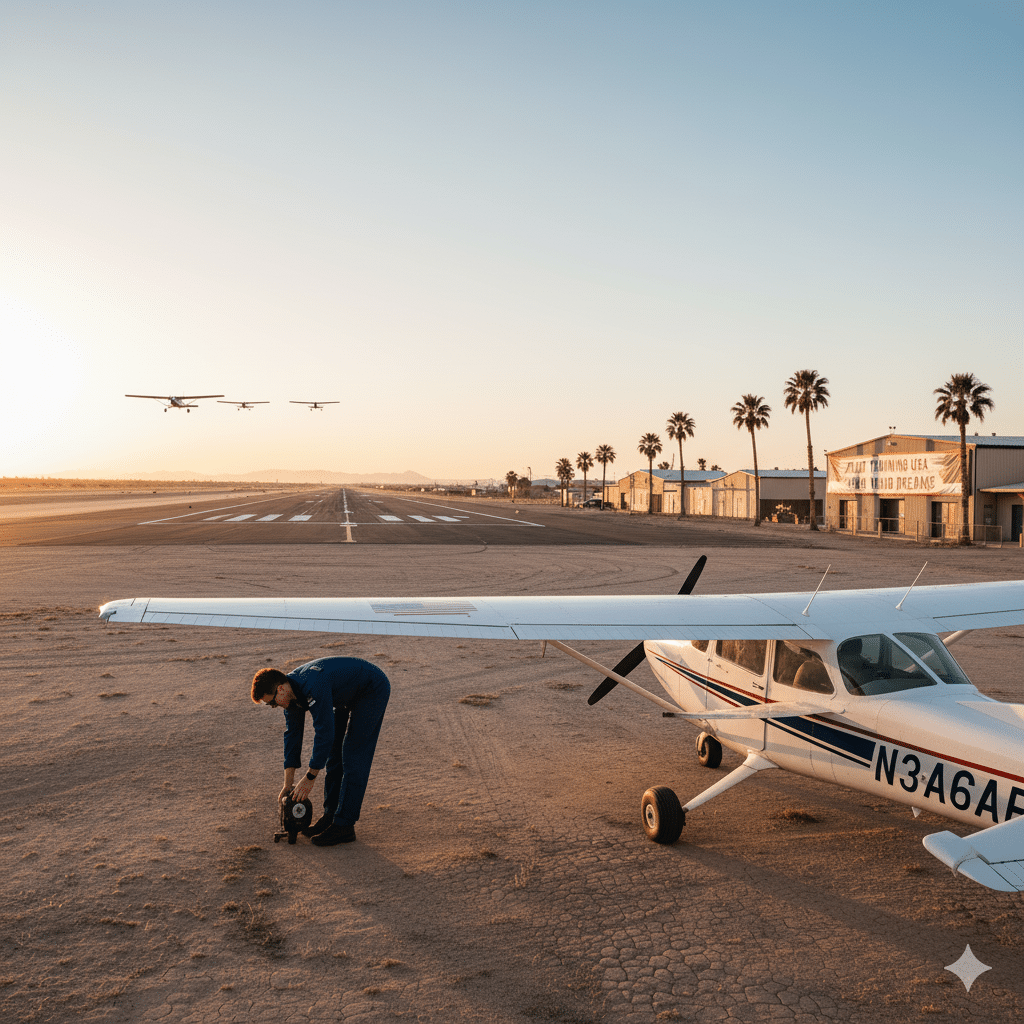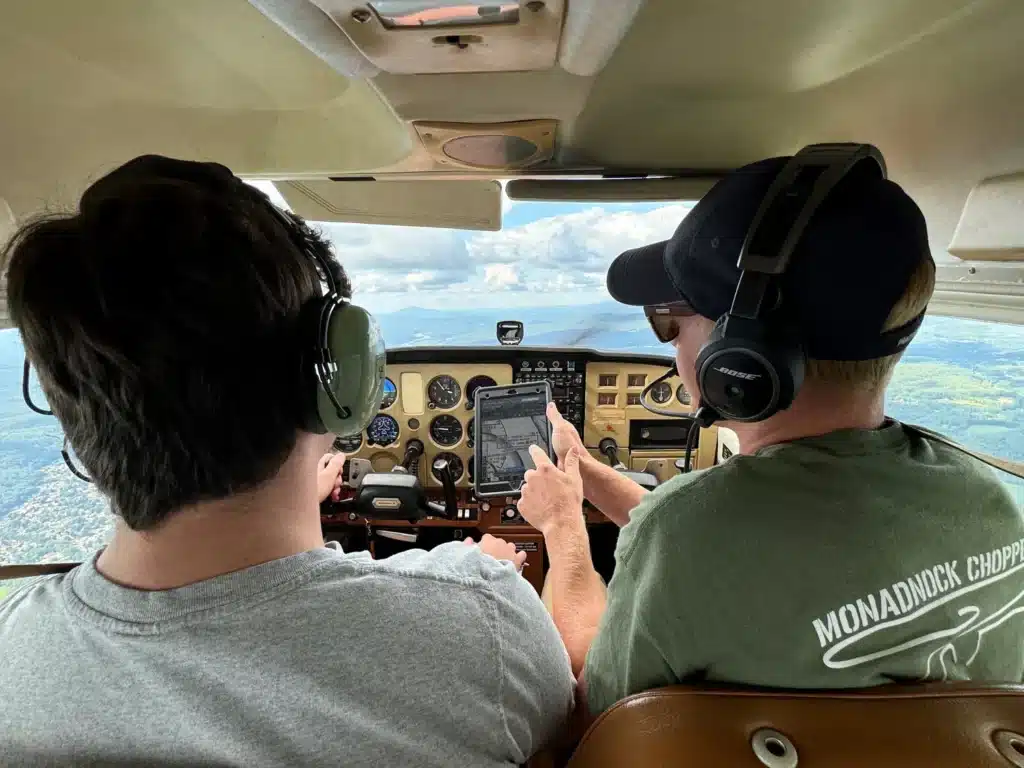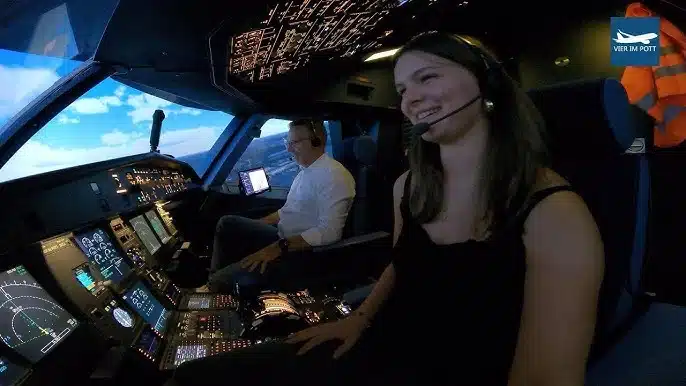Introduction — The Dream of Flying
Ever dreamed of climbing into the cockpit, hearing the engines roar, and soaring above the clouds? Becoming a pilot remains one of the most exciting, challenging, and rewarding careers available. In the United States, thanks to the Federal Aviation Administration (FAA) licensing system, the pathway from no flight experience to a professional cockpit role is well-structured, though it demands time, money, and dedication.
Pilot training in usa is in high demand and many young americans are now opting to go in this profession.
In this guide, you’ll discover how to go from zero experience to airline-ready pilot in the U.S., learn the costs involved, training stages, timelines, and how to maximise your chances of success.

Understanding the Pilot Training Path
Here are the main certification and rating steps in the U.S. under the FAA framework:
-
Student Pilot: your first stage. You’ll obtain a Student Pilot Certificate and begin training.
-
Private Pilot License (PPL or Private Pilot Certificate): allows you to fly for pleasure but not for hire.
-
Instrument Rating (IR): adds capability to fly under instrument flight rules (IFR), using cockpit instruments rather than only visual cues.
-
Commercial Pilot License (CPL): allows you to be paid for flying (subject to other ratings/requirements).
-
Multi-Engine Rating (MER): enables you to fly aircraft with more than one engine; important for professional roles.
-
Certified Flight Instructor (CFI / CFII / MEI): many pilots build hours by instructing.
-
Airline Transport Pilot (ATP) Certificate: the highest level, required to serve as an airline first officer or captain in major airline operations.
Each stage builds on the last, adding hours, more complex aircraft, more responsibilities, and higher qualification. The timeline from “zero” to “cockpit-ready” (for airlines) typically spans 2–4 years (or more depending on full-/part-time) and requires significant financial investment.

Step-by-Step Journey from Zero to Cockpit
Step 1 — Student Pilot Phase
Before your first solo flight, you’ll need:
-
To pass a medical examination by an FAA-appointed Aviation Medical Examiner (AME). For initial training you usually need at least a 3rd-class medical certificate.
-
Fluent English (reading, writing, speaking, understanding) as per FAA language requirement.
-
A Student Pilot Certificate (or through your training school).
-
Begin ground school (learning aviation theory: regulations, weather, navigation, aerodynamics) and dual flight lessons with an instructor.
This phase is about gaining your first hours, building confidence, learning basic aircraft handling, take-offs/landings, navigation, and safety procedures.
Step 2 — Private Pilot License (PPL)
The FAA sets minimum requirements for a PPL: for example, under Part 61 you need at least 40 hours of flight time including 20 hours dual (with instructor) and 10 hours solo. mata-usa.org+2PilotPair+2
However, the average student typically requires more (60-70 hours) due to learning, weather delays, skill refinement. Reddit+2mata-usa.org+2
Typical costs: According to one source, PPL in the U.S. ranges around US$10,000-15,000 depending on region and how quickly you progress. PilotPair+2mata-usa.org+2
Example cost breakdown (from a training school):
-
Aircraft rental $129/hr × 40 hours = ~$5,160
-
Flight instructor ~$60/hr × 45 hours = ~$2,700
-
Ground school, headset, supplies ~$300-$350 + headset ~$250
-
FAA written exam ~$150
-
Medical exam ~$120 American Flight Schools
So you can see minimums are possible, but many students spend more.
At this point you’ll be able to fly solo, carry passengers (within private pilot privileges), navigate between airports, fly VFR (visual flight rules) and enjoy flying recreationally.
Step 3 — Instrument Rating (IR)
Once you hold your PPL, many aspiring professional pilots add an Instrument Rating. This allows you to fly in lower visibility, fly under IFR, and is often a required step for commercial flying.
Typical extra cost for IR is around $10,000-15,000 depending on hours and simulator usage. Flight School USA+1
A key note: Using flight simulators (FAA-approved) can reduce cost because fewer full-aircraft hours may be required. US Aviation Academy
This rating significantly increases your employability and opens the door to more advanced training.
Step 4 — Commercial Pilot License (CPL)
The CPL allows you to fly for hire (with certain ratings and privileges). Under FAA rules, for a commercial certificate you generally need:
-
At least 250 flight hours (under Part 61) including certain categories/conditions (dual, solo, cross-country).
-
Demonstration of advanced maneuvers, precision flying, complex aircraft (depending on school).
Cost estimates for the commercial license portion vary widely; one guide suggests “from zero experience up to airline-ready” training costs $70,000-$110,000 overall. US Aviation Academy+1
Another estimates PPL + instrument + commercial total about $42,000 (in one program). mata-usa.org
So it helps to plan for tens of thousands of dollars in this stage.
Step 5 — Multi-Engine Rating (MER)
If you aim to fly larger aircraft (as a professional) you’ll often need a Multi-Engine Rating — to fly twin-engine aircraft.
Costs may range from $3,000-$10,000 depending on aircraft rental rates, school, number of hours required. Some sources indicate add-on ratings in this range. KORE HEADSET LLC
Adding this rating improves your eligibility for commercial and airline operations.
Step 6 — Certified Flight Instructor (CFI / CFII / MEI)
Many pilots build hours toward 1,500 required for an airline job by instructing. You become certified as an Instructor (CFI), possibly Instrument Instructor (CFII), and Multi-Engine Instructor (MEI).
Costs for these ratings might be $5,000-$10,000 depending on program and hours required. Flight School USA
As an instructor you can earn while you build hours — mitigating cost and moving you toward airline hours.
Step 7 — Airline Transport Pilot (ATP) Certificate
To sit in the right-seat of an airline (or captain later) you’ll need an ATP certificate. Requirements include:
-
Minimum age: 23 years (for initial ATP)
-
Hold a Commercial Pilot Certificate and an Instrument Rating
-
Minimum 1,500 flight hours (typical for airline eligibility)
Once reached, you complete required ATP ground school, simulator, checkride. Additional cost may be $5,000-$8,000 for ATP-specific training (above the hours you’ve logged). Flight School USA+1
At this point you’re truly “cockpit-ready” for airline operations (or similar high level commercial flying).
Total Cost from Zero to Cockpit
Estimating your total investment:
-
Starting from zero, through PPL, IR, CPL, MER, CFI and ATP stages, the cumulative cost in many structured programs falls into the US$70,000-110,000 range. US Aviation Academy+1
-
A more conservative estimate (for just through CPL) might be US$40,000-50,000 depending heavily on region, hours needed, aircraft rental rates, weather, instructor availability. mata-usa.org+1
-
Region matters a lot: flying in high-cost areas (California, Northeast) will cost more. A PPL might cost in southern/midwest states as low as US$9,000-13,000, while in high cost regions US$14,000-18,000 or more. PilotPair+1
Factors that increase cost: more hours needed, weather delays, aircraft rental/hours, multi-engine training, living costs if relocating.
Cost-saving factors: flying frequently (less skill decay), program with fixed price/inclusive hours, using simulators, efficient instructor scheduling, choosing lower-cost geographic region.
Duration — How Long Does It Take to Become a Pilot?
-
For a PPL: if training full-time and weather/frequency are good, it can be done in 3-6 months or somewhat more. But many take 9-12 months or longer if part-time.
-
From zero to CPL/airline-ready: many programs expect 12-24 months, though realistically 2-4 years is common depending on part-time vs full-time, weather, aircraft availability, student’s pace. For example, one source noted training for international students in the U.S. might be 12-18 months. pilottraininginusa.in
-
Building to 1,500 hours (to ATP) takes time: many pilots instruct or fly other jobs while building hours, so reaching airline eligibility can take 2–5 years or more depending on flying opportunities.
Financing Your Pilot Training
Because costs are high, you’ll likely need to plan financing:
-
Scholarships & grants: Organisations like Aircraft Owners and Pilots Association (AOPA), Women in Aviation International and others offer aviation-training scholarships.
-
Student loans: Some flight schools (especially those tied to colleges/universities) allow Federal student aid if part of approved programs. US Aviation Academy
-
Pay-as-you-go: Many students pay for each lesson rather than one large lump sum.
-
Work while building hours: Becoming a flight instructor helps you earn while you build toward airline hours.
-
Choosing lower-cost locations and efficient programs can reduce financing burden.
Choosing the Right Flight School
Selecting the right school is critical. Consider:
-
FAA Part 61 vs Part 141 programs: Part 141 schools follow a more structured syllabus and may allow faster completion with fewer hours; Part 61 may offer more flexibility. For example, estimates show Part 141 programs may reduce hours/cost. mata-usa.org
-
Location & weather: More clear-weather days means fewer delays.
-
Fleet & aircraft availability: More training slots, newer aircraft, twin-engine options.
-
Safety record and instructor quality: Ask for pass-rates, instructor turnover, student testimonials.
-
Cost transparency: Ensure quoted hours are realistic (not just minimums) and ask about extra/hidden fees. As one pilot wrote:
“Quote both the bare minimums and the averages.” Reddit
-
Support services: Housing, scheduling, simulator access, ground school model.
Career Opportunities After Training
Once you’re airline-eligible, you have several career pathways:
-
Flight Instructor: Build hours while earning income.
-
Charter / Cargo Pilot: Fly smaller aircraft commercially.
-
Regional Airline First Officer: Many regional airlines hire pilots with ATP and 1,500 hours.
-
Major Airline Pilot: With experience, you may move to major carriers.
Salaries: Starting regional first-officer salaries might be US$70,000-80,000 or more, depending on airline and aircraft. US Aviation Academy+1
The lifestyle: Travel, responsibility, teamwork, and the joy of flight — balanced with demands (irregular hours, away from home, regulatory compliance).
Challenges and Rewards
Challenges:
-
High upfront cost and financial risk.
-
Medical certification and fitness.
-
Weather and scheduling delays.
-
Skill decay if training not consistent.
-
Building 1,500 hours can be time consuming.
Rewards: -
Flying for a living, travel opportunities, seeing the world from above.
-
Technical challenge and ongoing learning.
-
Respect and responsibility.
-
Many pilots find deep personal fulfilment in this career.
Choosing to become a pilot is a serious commitment—but for the right person, it can be one of the most rewarding career choices.
FAQs About Becoming a Pilot in the U.S.
Q: How long does pilot training take?
A: For a Private Pilot License (PPL), often 3-12 months depending on intensity; from zero to airline-ready (1,500 hours) often 2-4 years or more.
Q: What is the minimum age?
A: 17 years old to hold a Private Pilot Certificate; 18 for a Commercial Pilot Certificate; 23 for an ATP certificate.
Q: How much do airline pilots earn?
A: Starting regional first officers may earn ~$70,000-80,000; major airline salaries rise significantly with experience. US Aviation Academy+1
Q: Can international students become pilots in the U.S.?
A: Yes — many U.S. flight schools accept international students. They must meet FAA medical and TSA approval (if needed) and may need visa status. One overview for Indian students showed cost USD 45,000-80,000 for U.S. training. pilottraininginusa.in
Q: What is the best time to start flight training?
A: As soon as you are medically cleared and ready to commit. Training regularly (multiple flights per week) avoids skill decay and extra hours/costs. Training in good weather seasons helps too.

Conclusion — From Zero to Cockpit
Becoming a pilot in the U.S. is a journey of passion, investment, discipline and skill. From your first dual flight to pushing back from the gate as a first officer, the path is clear—but it demands effort, money, and time.
If you’re ready to commit, you’ll find the reward: the world from above, a challenging career, and the satisfaction of mastering flight. With careful planning—choosing the right school, budgeting realistically, flying consistently—you can turn your dream of the cockpit into reality.
✈️ Note
All training costs, timelines, and requirements mentioned in this article are approximate and may vary based on factors such as location, flight school, aircraft type, fuel prices, individual progress, and FAA regulations. Readers are encouraged to verify details directly with authorized flight training providers and the Federal Aviation Administration (FAA) before making financial or career decisions
